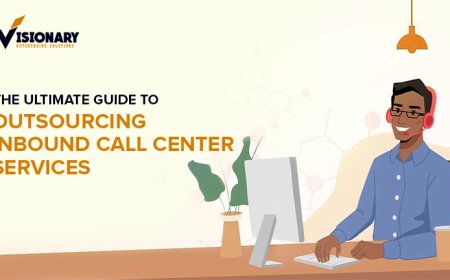Unlocking Business Efficiency Through Software Integration
Businesses today rely on a multitude of software tools to manage operations, from accounting software to project management platforms. However, without Software Integration, these tools often operate in isolation, leading to inefficiencies, data duplication, and errors. Here’s why Software Integration is critical:
In todays fast-paced digital landscape, businesses rely heavily on technology to streamline operations, enhance productivity, and deliver exceptional customer experiences.Software Integration has emerged as a cornerstone of modern business strategies, enabling organizations to connect disparate systems, automate processes, and create a cohesive technological ecosystem. By seamlessly linking applications, databases, and platforms, Software Integration empowers businesses to operate efficiently and adapt to changing market demands. This article explores the concept of Software Integration, its benefits, challenges, and its role in Portal Development, while also addressing common questions and providing actionable insights.
What is Software Integration?
Software Integration refers to the process of connecting different software applications, systems, or platforms to function as a unified whole. This involves enabling data sharing, communication, and interoperability between tools such as Customer Relationship Management (CRM) systems, Enterprise Resource Planning (ERP) software, e-commerce platforms, and more. For instance, integrating a CRM with an email marketing tool allows businesses to automate customer outreach based on real-time data, improving efficiency and personalization.
The goal of Software Integration is to eliminate silos, reduce manual work, and create a streamlined workflow. In the context of Portal Development, Software Integration ensures that web or mobile portalssuch as employee intranets, customer portals, or partner dashboardscan interact with multiple backend systems, providing users with a centralized, user-friendly interface.
Why Software Integration Matters
Businesses today rely on a multitude of software tools to manage operations, from accounting software to project management platforms. However, without Software Integration, these tools often operate in isolation, leading to inefficiencies, data duplication, and errors. Heres why Software Integration is critical:
-
Enhanced Efficiency: By automating data transfer between systems, Software Integration reduces the need for manual data entry, saving time and minimizing errors. For example, integrating an e-commerce platform with an inventory management system ensures real-time stock updates, preventing overselling.
-
Improved Data Accuracy: When systems are integrated, data flows seamlessly, reducing discrepancies. This is particularly important in Portal Development, where portals rely on accurate data from multiple sources to deliver reliable user experiences.
-
Better Decision-Making: Integrated systems provide a unified view of data, enabling businesses to generate comprehensive reports and insights. For instance, a customer portal developed with Software Integration can display order history, support tickets, and account details in one place, empowering users and administrators alike.
-
Scalability: As businesses grow, their software needs evolve. Software Integration allows organizations to add new tools or scale existing ones without disrupting workflows, making it a vital component of Portal Development for long-term success.
-
Enhanced User Experience: In Portal Development, Software Integration ensures that users can access all necessary information and functionalities through a single interface, improving usability and satisfaction.
The Role of Software Integration in Portal Development
Portal Development involves creating web or mobile platforms that serve as centralized hubs for specific user groups, such as employees, customers, or partners. These portals often need to pull data from multiple sources, such as databases, CRMs, or third-party APIs, to provide a seamless experience. Software Integration plays a pivotal role in making this possible.
For example, a customer portal might integrate with a CRM to display personalized account information, an e-commerce system for order tracking, and a helpdesk system for support tickets. By leveraging Software Integration, developers can ensure that the portal retrieves and displays data in real time, creating a cohesive and efficient user experience. Similarly, an employee portal might integrate HR systems, project management tools, and communication platforms to streamline internal processes.
Software Integration in Portal Development also enables features like single sign-on (SSO), where users can access multiple systems with one set of credentials, enhancing security and convenience. Additionally, it supports automation, such as sending notifications or updating records across systems when a user takes an action within the portal.
Challenges of Software Integration
While the benefits of Software Integration are undeniable, the process is not without challenges. Understanding these hurdles is essential for businesses embarking on Software Integration projects, particularly in Portal Development:
-
Compatibility Issues: Different systems may use varying data formats, protocols, or architectures, making integration complex. For instance, integrating legacy systems with modern cloud-based platforms often requires custom solutions.
-
Security Concerns: Integrating systems involves sharing sensitive data, which can expose vulnerabilities if not handled properly. Robust security measures, such as encryption and secure APIs, are critical to protect data during Software Integration.
-
Cost and Time: Software Integration can be resource-intensive, requiring skilled developers, testing, and maintenance. In Portal Development, businesses must balance the costs of integration with the expected benefits.
-
Maintenance: Integrated systems require ongoing updates to ensure compatibility, especially as software vendors release new versions or features.
To address these challenges, businesses can adopt strategies like using middleware, leveraging APIs, or partnering with experienced Portal Development teams to design scalable, secure integration solutions.
Best Practices for Successful Software Integration
To maximize the benefits of Software Integration in Portal Development and beyond, businesses should follow these best practices:
-
Define Clear Objectives: Outline the goals of integration, such as improving efficiency or enhancing user experience, to guide the process.
-
Choose the Right Tools: Select integration platforms or APIs that align with your systems and business needs.
-
Prioritize Security: Implement robust security protocols to protect data during integration.
-
Test Thoroughly: Conduct rigorous testing to ensure seamless data flow and functionality across systems.
-
Plan for Scalability: Design integrations that can accommodate future growth and new technologies.
By adhering to these practices, businesses can create robust, efficient systems that enhance both operational performance and user satisfaction.
FAQs About Software Integration
Q: What is the difference between Software Integration and API integration?
A: Software Integration is a broad term encompassing any method of connecting software systems, while API integration specifically uses Application Programming Interfaces (APIs) to enable communication between applications. APIs are a common tool for Software Integration, especially in Portal Development.
Q: How long does Software Integration take?
A: The timeline depends on the complexity of the systems, the number of integrations, and the chosen approach. Simple integrations may take weeks, while complex projects, such as those involving Portal Development, may require months.
Q: Can small businesses benefit from Software Integration?
A: Absolutely. Small businesses can use Software Integration to automate tasks, improve data accuracy, and enhance customer experiences, often at a lower cost with cloud-based solutions.
Q: What role does Software Integration play in customer portal development?
A: In Portal Development, Software Integration enables the portal to connect with backend systems like CRMs, payment gateways, or support platforms, creating a seamless and personalized user experience.
Q: How can businesses ensure data security during Software Integration?
A: Businesses should use secure APIs, encrypt data, and implement authentication protocols like OAuth to safeguard information during Software Integration.
Conclusion
Software Integration is a transformative process that empowers businesses to connect their systems, streamline operations, and deliver exceptional user experiences. In the realm of Portal Development, it plays a critical role in creating centralized, user-friendly platforms that aggregate data and functionalities from multiple sources. While challenges like compatibility and security exist, adopting best practices and leveraging modern tools can ensure successful integration. By embracing Software Integration, businesses can unlock new levels of efficiency, scalability, and innovation, positioning themselves for success in an increasingly digital world.










































